Survey of Art I: Final Exam
1/79
There's no tags or description
Looks like no tags are added yet.
Name | Mastery | Learn | Test | Matching | Spaced |
|---|
No study sessions yet.
80 Terms
What religious and cultural factors contributed to the view of the Byzantines as “the forgotten empire?”
Byzantine Empire hit its golden age immediately in a short-lived phase where it almost retook Western Europe. Held a negative reputation and was ignored by Western scholars for years as a result
How did the Byzantines view themselves? Why?
Saw themselves as the Roman Empire; were part of the eastern district and believed the empire did not fall until their civilization collapsed. The fall of Rome as thought of in the west represented the fall of only half the empire in their view. They also saw themselves as intellectuals, as evident in the concept of the Hagia Sophia
What key differences distinguished the Byzantine Empire from the Roman Empire?
The Byzantines spoke Greek instead of Latin and were uniformly Christian from outset excluding one Pagan emperor. Practiced caesaropapism.
What did Constantine do for the organized religion of the Byzantine Empire?
Constantine was the first Caesar pope. He legalized Christianity and also convened a number of conferences where he called together various bishops and theologians whom he commanded to list the major ideas of Christianity and determine the texts to include in the Bible. Progressed the religion beyond its previous localized form
What Byzantine beliefs and practices soured Western Europe’s impression of their empire?
Because Byzantine’s saw themselves as Roman, they demanded all previously Roman territories back from Europe. Practiced caesaropapism (its implicit claims about the pope and the emperor did not sit well with Western Europe). Byzantines’ also flaunted their inherited wealth, believing it was honoring God
Byzantine Golden Age
The empire was prosperous under the reign of Justinian and his empress, Theodora. Although their rule began shakily, with Justinian killing hundreds to soothe a rebellion against him, he later funds the Hagia Sophia, a symbol to Byzantine people of his power
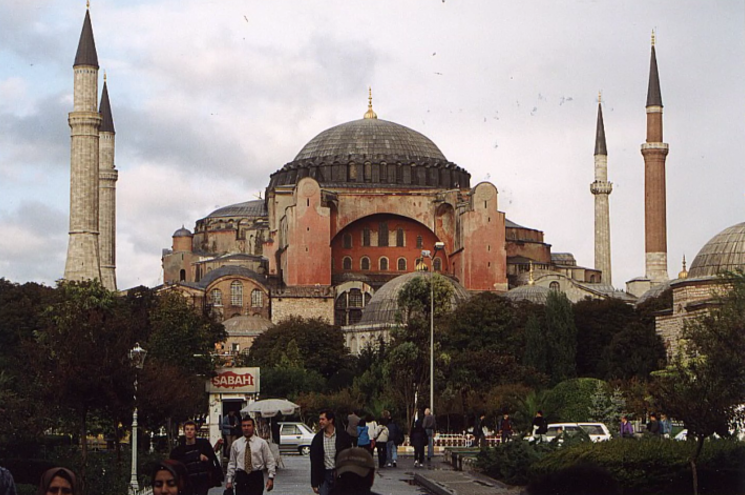
What did the Hagia Sophia represent?
Powerful symbol of Christianity and Byzantine intellectualism, dedicated to the abstract concept of “wisdom” instead of a biblical figure or event. Stood as a testament of Emperor Justinian’s power. Functions as the center of Byzantine Christian faith
What churches were built in Western Europe versus Eastern Europe?
Basilica-plan churches were used in the west, central-plan churches were used in the east
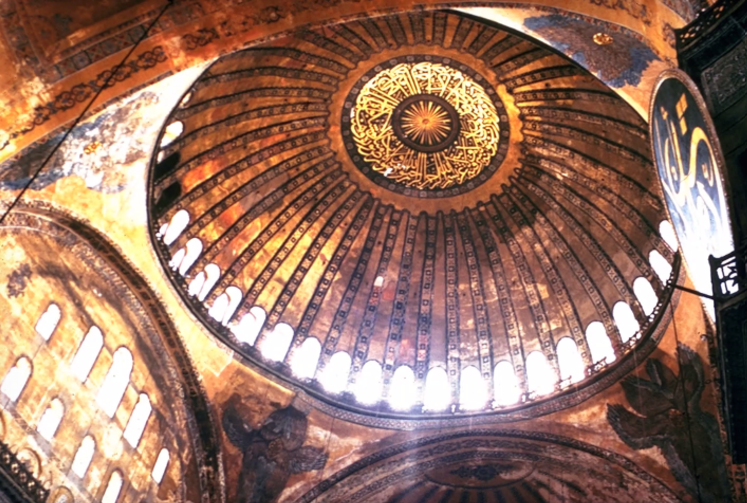
What is the most remarkable part about the Hagia Sophia?
Its massive dome above the naos. Supported by pendentives which allowed for the walls to be heavily decorated. Not all four walls are present, and the ones that are have multiple windows. These features let a large amount of light in which reflects off interior tiles
Caesaropapism
The Caesar is also the pope. Claimed the emperor as the legitimate Roman emperor and the individual who oversaw Christianity
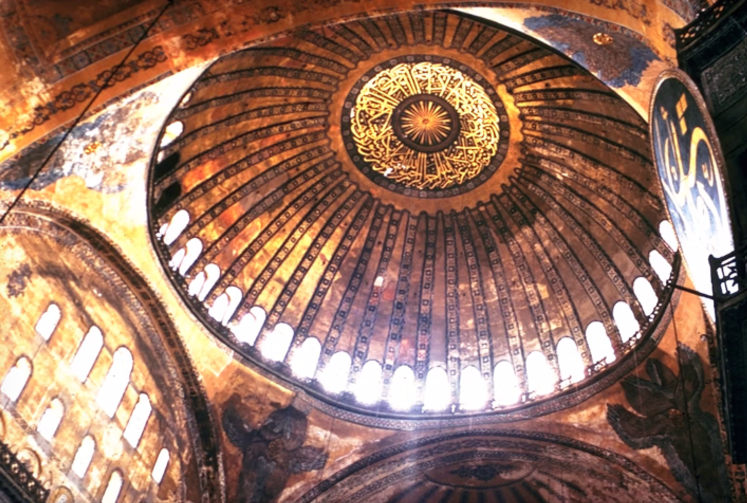
Pendentives
Four structures on the corners of the naos in the Hagia Sophia. Triangular, curving vaults that support the dome. Allows the use of a circular dome on a square building. Its four-point support allowed the Hagia Sophia to decorate the walls, as they did not have a structural responsibility
Why do we have few surviving examples of Byzantine mosaics?
The mosaics of the Hagia Sophia were painted over when the building was turned into a mosque as they depicted religious figures (banned in Islam). The Turkish government briefly declared it as a historical monument, which allowed for the restoration of these mosaics, but later defined it as a mosque again, halting such renovations
What material did Byzantines use as part of their buildings?
Marble repurposed from Pagan buildings with specifically interesting patterns and textures
How did the Byzantines view wealth?
Saw wealth and luxuries as a gift/blessing from God. Inherited the wealthiest part of the Roman Empire
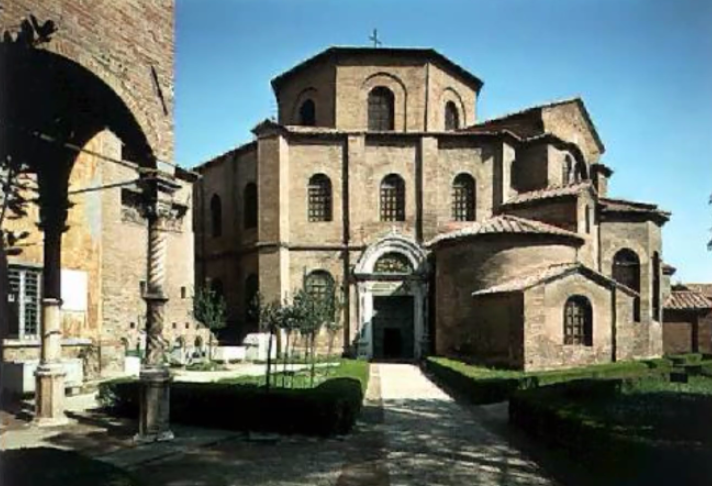
The purpose of the San Vitalis
Built to reinforce the idea that the Byzantines were in charge
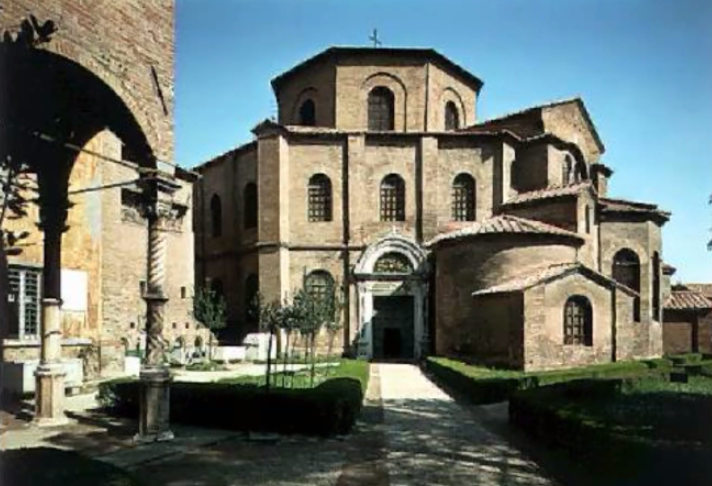
How is San Vitalis similar to standard Byzantine architecture of churches at the time? How does it stand out in Ravenna?
Follows the normal architectural footprint in its plain exterior and highly-decorated interior (colorful, marble, gold). Its Byzantine nature is reinforced by two famous mosaics of Justinian and Theodora. Immediately recognizable as a Byzantine building, as it was the only church of its look in Ravenna
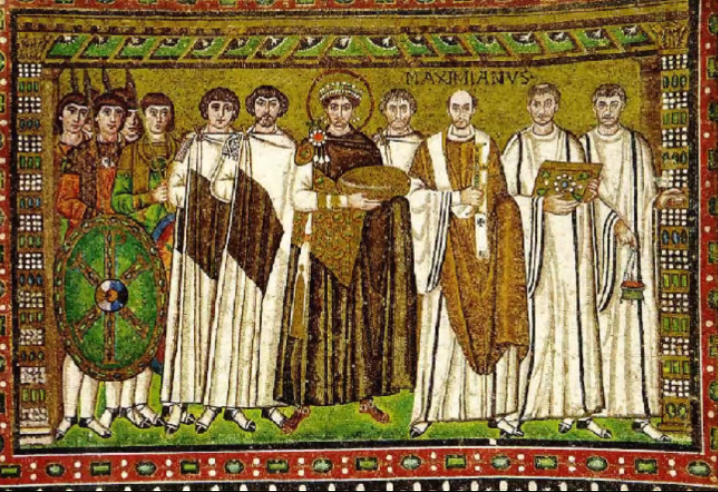
What is the political and cultural purpose of the Justinian and Theodora mosaics in the San Vitalis?
Due to their position on either side of the ceiling dome, those practicing Communion would have to acknowledge the role of the emperor and empress in their right to practice religion. Reinforced who is in charge. A representation of the emperor’s dual duty in Caesaropapism
Encaustic
Wax painting
Icon
A portable religious image. Not necessarily small and could range from the size of a coffee cup to so large it demands multiple people’s help to carry it.
Icon painting
Perhaps the most influential Byzantine art. Stylistically has certain congruent elements
Iconoclasm
Icon-smashing. Would happen in periods in Byzantine history. A prohibition on the creation of icons where icon-making became illegal. Called for the arrest or execution of icon painters and the destruction of their works. Stemmed from the debate over whether people were using them as a prayer tool (as intended) or praying to the icons themselves
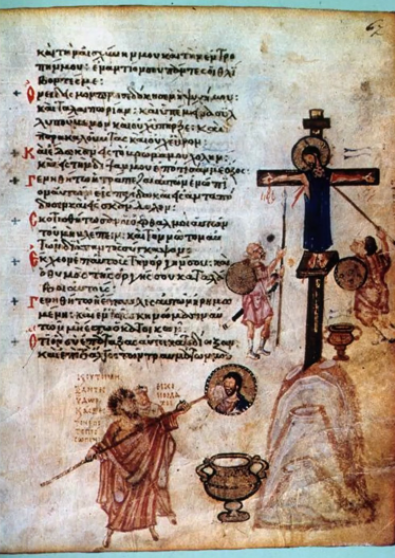
Iconoclast Controversy
Compares Iconoclasts to Roman soldiers attacking Jesus on the cross
What did icon painters do when the Byzantine empire experienced a period of Iconoclasm?
Icon painters would flee the country often taking refuge in Italy which never experienced Iconoclasm, were they would set up their workshops and continue selling their work
What three subjects did Byzantine icon painters introduce to Christian art?
Virgin and child images (images of the Virgin Mary with the Christ child), images of Jesus as the ruler of all / the judge (an older man), and crucifixion scenes
What periods is Medieval Europe divided into?
Early Medieval Period, Romanesque, and Late/Gothic
What is the issue with the Early Medieval Period’s more common moniker, the “Dark Ages?”
Civilizations during the time period not only took inspiration from other cultures, therefore not living in ignorance, but taking elements directly from Roman culture, which the “Dark Ages” argues they had forgotten about
What is the political state of Europe during the Early Medieval Period?
Disjointed, divided into barbarian factions. Tribes were most often Christian which allowed the church to be a single unifying factor following the collapse of Rome and the chaotic state of Europe
What was the cultural relationship between the Hiberno-Saxons and the Vikings?
There was a lot of cultural overlap between the two. The Hiberno-Saxons were a mongrel group (comprised of different people mixed together). Cultural overlap is largely due to Viking raids into Hiberno-Saxon land
What were the nature of the Vikings in terms of behavior with land and people?
Though they did engage in violent raids, they more often colonized. They expanded everywhere (settling in Spain, Italy, Russia, the Byzantine Empire, Egypt, the Silk Road, etc.)
What was the difficulty in navigating Pagan and Hiberno-Saxon traditions with the new Christian faith?
Christians want to make Christian art, but the only art they are familiar with is Pagan art. A letter from Pope Gregory I to Abbot about of missionary warns not to destroy all elements of Pagan culture and instead incorporate their traditions into Christianity to get more converts
What is the religious goal of Hiberno-Saxon art?
Blending Pagan styles with Christian beliefs
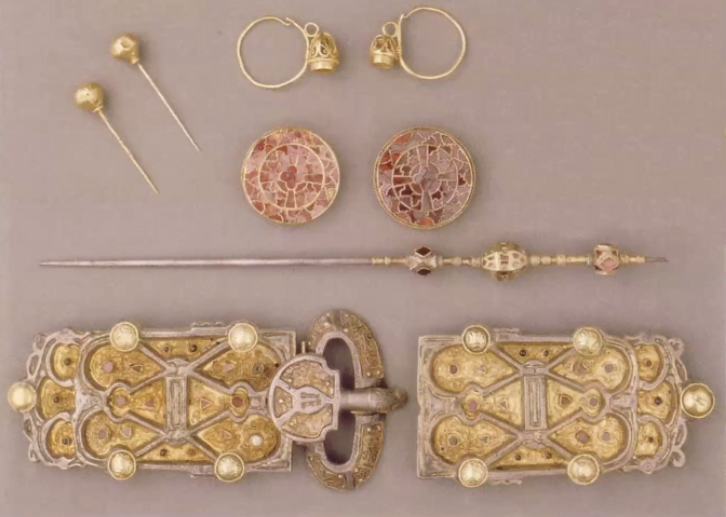
What was the cultural significance and purpose of metalwork jewelry done by barbarians in Early Medieval Europe?
A great example of Hiberno-Saxon metalwork as well as examples of items that would have been used to hold up pieces of a garment (particularly Roman dress)
Why do various cultures in the Early Medieval Period use/speak Latin, borrow Roman architectural styles, and dress like Romans?
Roman culture still symbolizes power and authority at this point, and people equate Roman-ness to being in charge. Kings/queens of various civilizations act as Roman patricians.
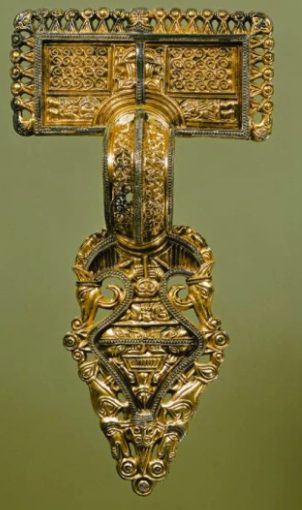
Animal style
A piece/work with a lot of animals illustrated on it
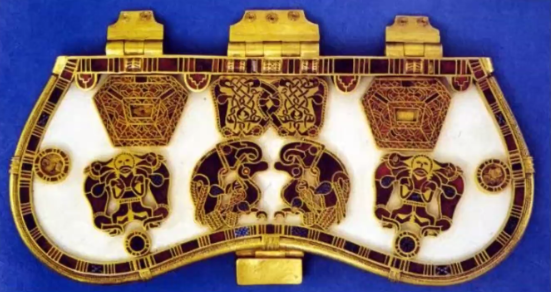
Cloisonne
Taking small, thin strips of metal to create an outline of the image, resulting in hollow compartments. Then, pieces of colored glass are placed inside the compartments. Upon firing the wood, the glass liquifies and fills in the compartments
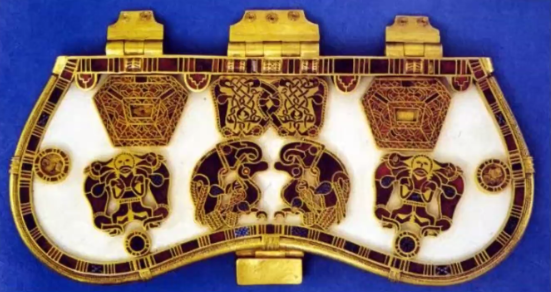
What makes this purse cover such an artistic feat?
Astonishingly small given it was made with the cloisonne technique. No magnifying technology existed to ease the process
What is the political significance of Charlemagne?
The very first emperor of the Carolingian Empire and the first holy Roman emperor. Made a deal with the bishop to become the latter and promised protection from the Byzantines in return. Oversaw an extensive empire and constructed monasteries and churches throughout his reign. Saw that Paganism never returned
Monasteries
Communities of monks (male religious officials). Essentially supported and ran themselves
Convents
Communities of nuns (female religious officials)

What did Charlemagne construct in Aachen, taking inspiration from the San Vitalis and Roman architecture? Why did he take those elements?
Constructed a Palace Chapel (palace connected to a chapel). Contained roman-style baths. Took elements from the San Vitalis after the Byzantines were forced out of Italy - it is a central-plan church with a relatively plain exterior and a luxurious interior. Though he disliked the Byzantines themselves, he could see that they were skilled artists. Took columns and arches from Roman architecture
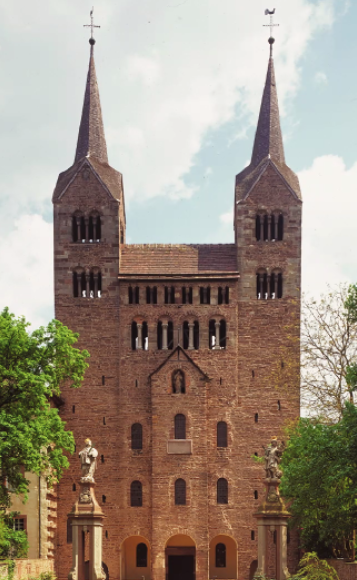
Purpose of the westwork and its influence on other cultures
Towers on the west end of a building. Functionally granted Charlemagne and invited guests to the second floor of his chapel. Used in all of his commissioned pieces post-Palace Chapel. Would have been considered too decorated of an interior for the Byzantines. The effective ancestor of all medieval cathedrals which would become interested in building higher and taller
Illuminated Manuscripts
Hand-written with illustrations
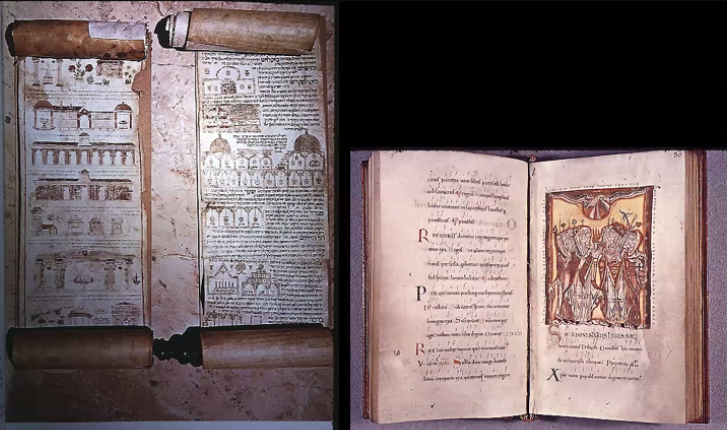
Why did Charlemagne and his heirs devote so much funding to the production of illuminated manuscripts?
They were considered ultimate luxury items due to the level of expenses and labor that went into their creation and their precious materials both in their own creation and their boxes
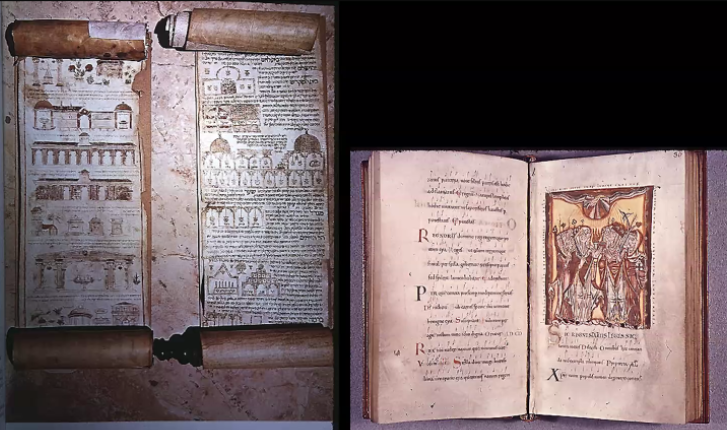
Where were illuminated manuscripts made?
Most were produced in monasteries that had workshops dedicated to manuscript production called scriptoria
What were illuminated manuscripts made with?
As paper was a later invention, most were written on animal skins - vellum and parchment. Vellum is more velvety, and parchment is rougher/coarser. Vellum allowed for bright colors. Ink/paint was made with ground-up gold, silver or lapis lazuli
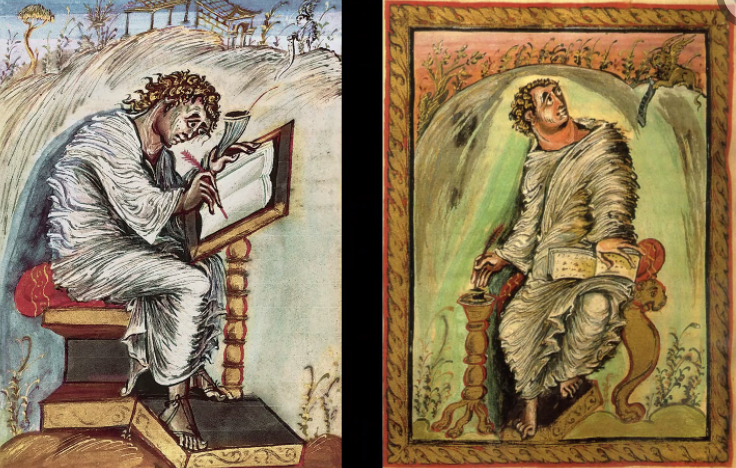
Content of the Ebbo Gospels
A more famous example of an illuminated manuscript Charlemagne funded. Images of Matthew and Mark writing their gospels in a free-flowing, gestural style in classical apparel (an imagined version version of how ancient people dressed). They look somewhat panicked by the job of writing the word of God as it is spoken to them (spoken by a man to Matthew and a lion to Mark). Arguable that the artists are representing themselves to illustrate the stressful, demanding act of making an illuminated manuscript
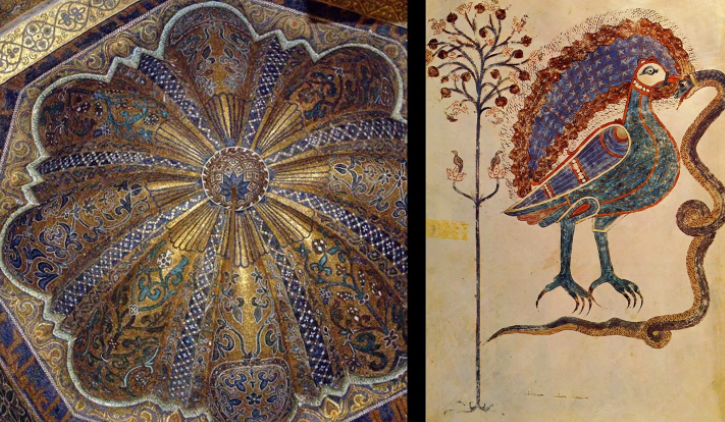
What unusual political situation kicks off the Mozarabic and Ottonian Empires? What does this lead to in religious art?
Spain is conquered by Islamic invaders. A majority Christian country is ruled by Islamic rulers. Because Islamic rulers were tolerant of Christians and Jews, Christian works were still created under the influence of Islamic art
What is the context behind the rise of the Ottonian Empire?
The next empire following the Carolingians. Got their name from their first three kings: Otto I, Otto II, and Otto III
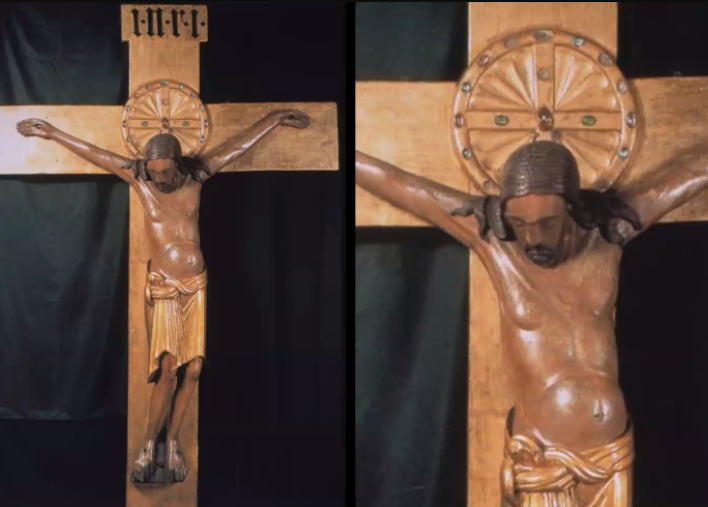
What is the cultural impact of the Gero Crucifix?
Illustrates a crucifixion scene very different than seen before and represents the start of a tradition seen later. Focuses on the idea of Christ suffering in His torture and death, going for emotional impact. Later images of Christ suffering can be traced back to this
Romanesque
Described an artistic style and approach to art - not a precise time period. A style of art inspired by Rome. International, as different variations of Romanesque art existed depending on country
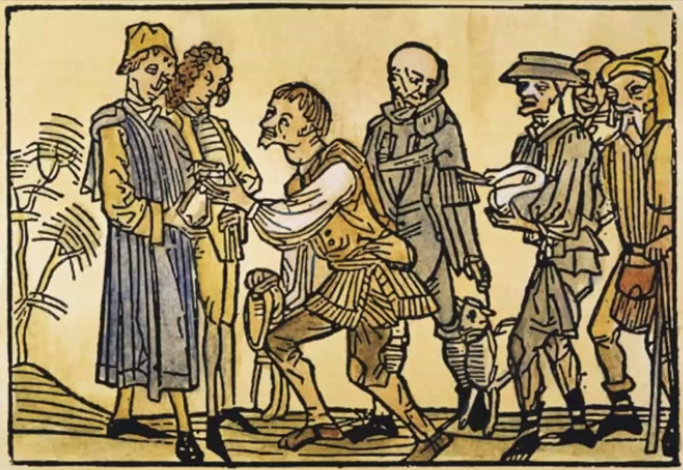
Why did Romanesque art have this particular style to it?
Medieval people are obsessed with spiritual issues
Why did medieval people read Aristotle and Plato so extensively?
To either find philosophical ways to support Christian theology or uncover errors
How did loyalty/money and protection operate on the social ladder during the Romanesque period?
A given person is loyal to those above them and responsible for the protection of those below them. Peasants worked tribute to give to their feudal lord who, in turn, protected their physical bodies
What is the role of the church during the Romanesque period?
The church is enormously powerful and wealthy and seeing the beginnings of its 800-year apex in Western Europe. On equal standing with European monarchs
What buildings were created during the Romanesque period?
The first colleges and universities were established
What behavior characterized the Romanesque period?
An obsession with relics and pilgrimage (going on journeys to see relics)
What did pilgrimage allow during the Romanesque period?
Helped spread the Romanesque style and contributed to the vast number of churches being built at the time
Most famous/major pilgrimage route
Way of St. James
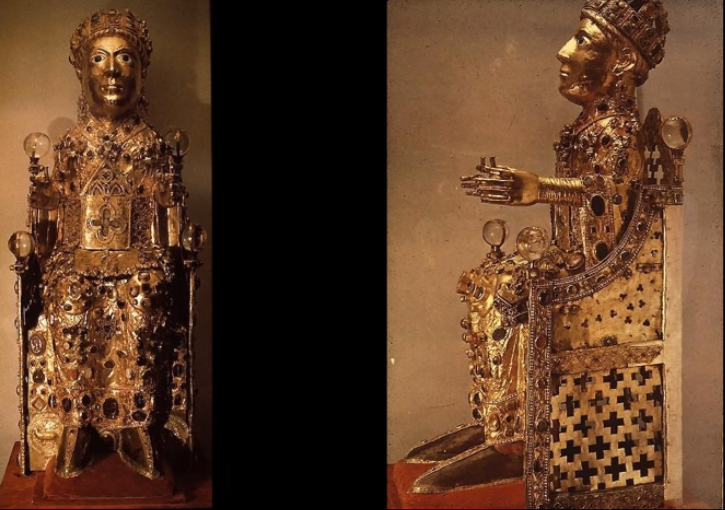
What was the cultural significance of these statues which functioned as relic containers?
Represented a booming market for the purchase and selling of relics, although a good portion were not legitimate and likely forgeries. Churches would collect them to gain pilgrims, as it was believed that visiting relics could limit one’s time in purgatory
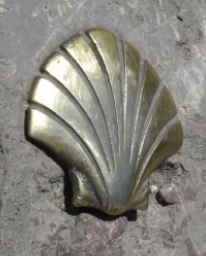
Meaning of mollusk shell in medieval art
Reference to pilgrimage and the Way of St. James
Cultural importance of the Normans
Conquered many places all over western Europe. Came up with their own unique culture residing in Northern France (blend of French and Viking culture). Constructed a number of churches. Brought a bulky, Romanesque style with them
Cultural impact of the crusades
Western Europe is brought back into contact with the Islamic world and its culture
Norman style of churches
Adopt the Carolingian westwork. Obsessed over height and building their churches taller and taller. Accomplished taller churches through buttresses
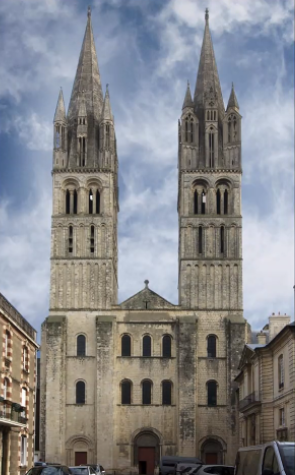
Features of the exterior of Church of Saint-Etienne
Buttresses hold up its weight and make the building look taller. Rounded arches and windows inspired by the Normans’ conception of Roman architecture. An overall sense of balance and symmetry inspired by Roman and Greek architectural pursuits. Divided up into stringcourses - dividing lines - 3 vertically and 3 horizontally. The number is used throughout the design for its symbolic meaning
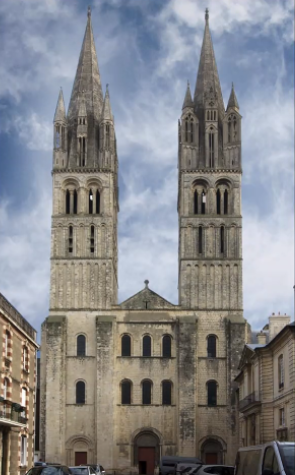
Features of the interior of Church of Saint-Etienne
Elevation is divided into three areas: arcade, gallery, and clerestory. Engaged columns. Lines of stonework on the ceiling called “ribs” which support the stone above and have a 3-part opening
Buttresses
Pillars that serve a support function and draw the eye upward.
Notable difference between British and French Normans
British Norman Romanesque cathedrals tended to be slightly larger in terms of their footprint - significantly wider, longer, and meant to hold more people
Compound
Bunches of columns
Engaged columns
Decorative columns that do not serve a structural purpose
How did Italy engage with the Romanesque style?
Italian Romanesque had flourishes of Byzantine influences (despite tensions with the empire). Use of mosaics is characteristically Italian Romanesque
What features characterize Romanesque buildings?
Innovative with experimentations in architectural sculpture and decorations on the exteriors of cathedrals. Sculpture decoration is subservient to architecture, and decorations are made to emphasize the shape of the architecture and accommodate it
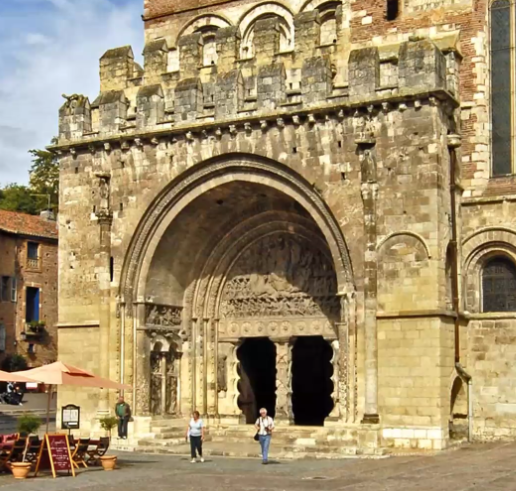
What is the significance of the church of Saint-Pierre in reference to the Romanesque style?
One of the most famous and wealthiest Romanesque churches. A more well-known example of Romanesque architectural sculpture decoration
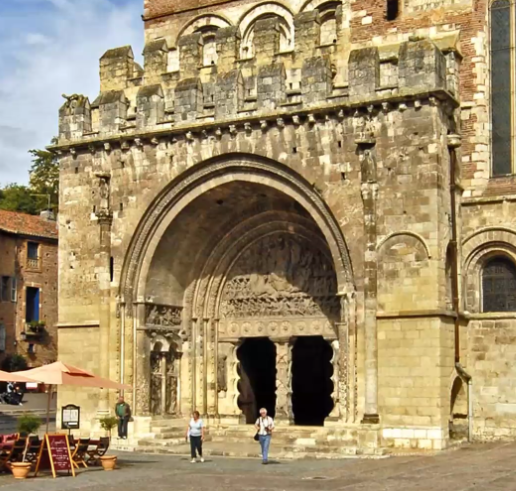
Features of the church of Saint-Pierre
Crenelation at the entrance inspired by Norman architecture on top of a Roman-inspired triumphal arch. Tympanum, jamb columns, and jamb figures. Trumeau in its archivolts.
Portal
Entrance
Crenelation
Tooth-pattern. Seen at the entrance of the church of Saint-Pierre
Tympanum
Semi-circular or triangular decorative wall over an entrance, door, or window bound by a lintel and arch
Trumeau
The proper name for a column in the middle of an opening
Goal of Romanesque art
Presenting an image/realm not of this earth
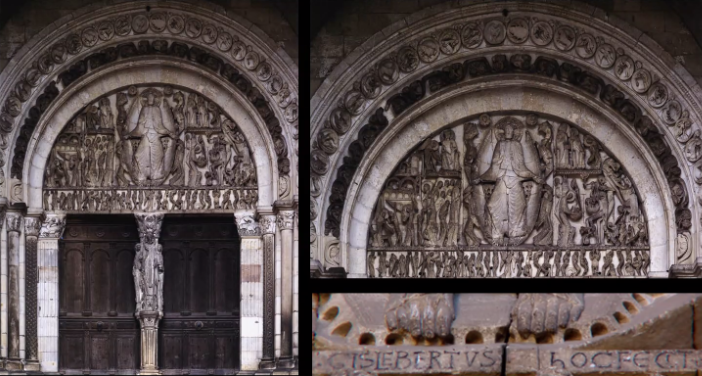
What is the cultural importance/purpose of the sculptural decoration Last Judgment?
One of the most famous examples of sculptural architecture depicting Christ with a full body halo. Meant to reinforce to pilgrims why they undertook pilgrimages. Illustrate the rewards of faithfulness (heaven) and the punishments for sin (hell with demons). Emphasizes that pilgrimage is crucial
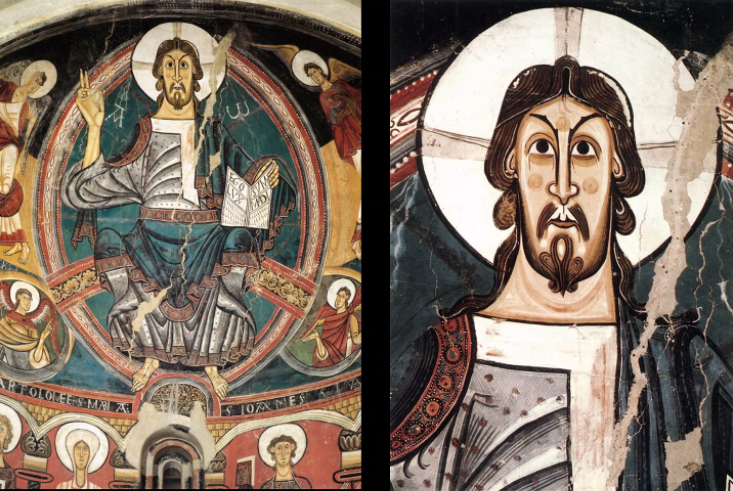
What does this Fresco painting from Spain potentially indicate about the state of artist communities during the Romanesque period?
Possible that this is evidence of a workshop of artist all working in a similar style - an astonishingly sophisticated artistic system that allowed artists scattered throughout Western Europe to communicate efficiently